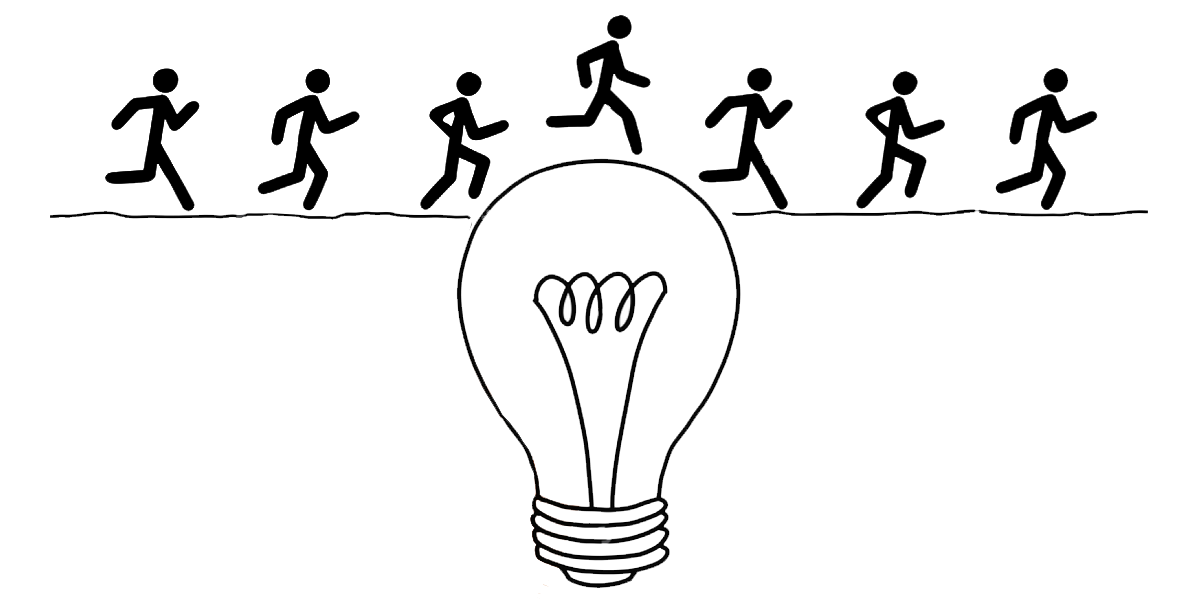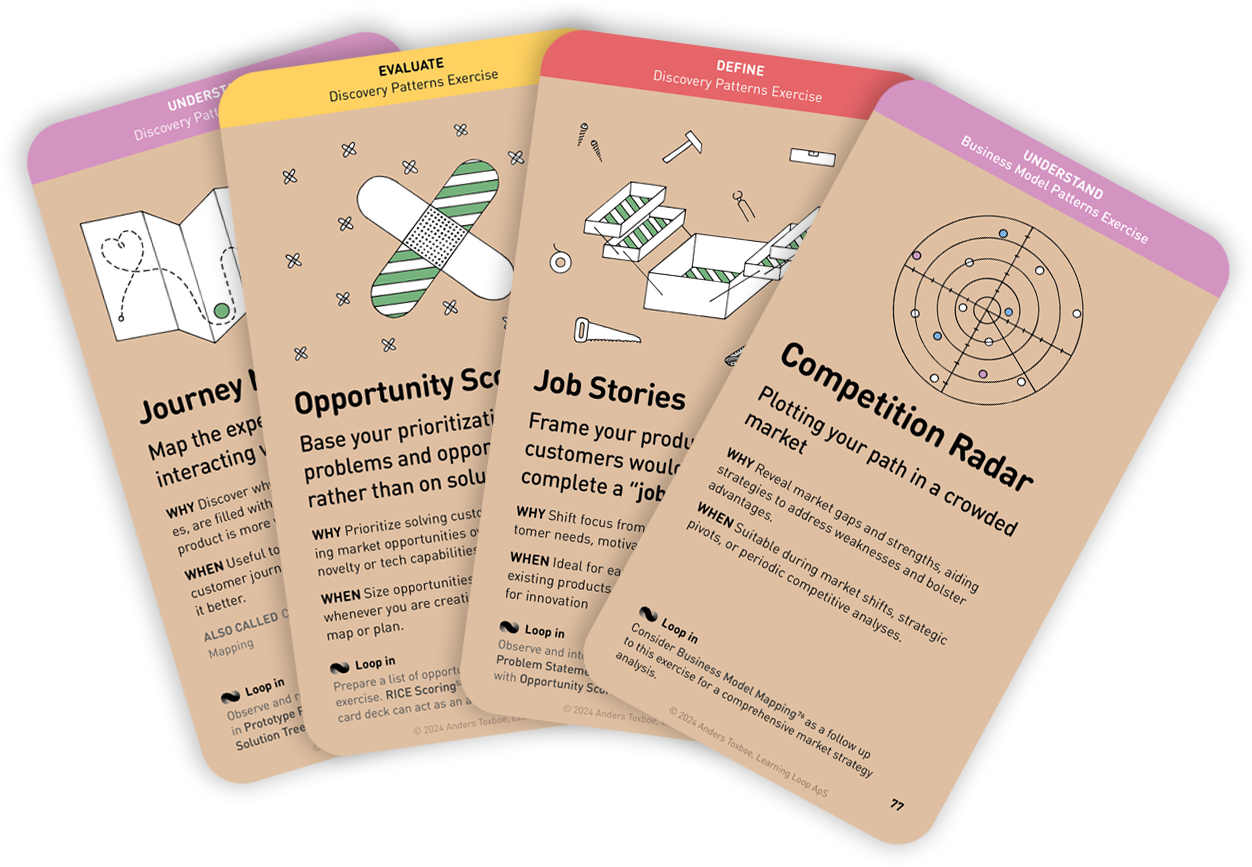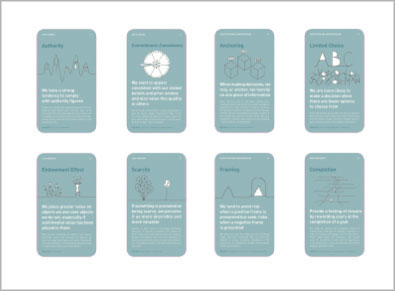Workshop Exercises: Define
Problem Statement
Describe current conditions and the gap between now and then

Why: Articulating the current- and desired-state gap, can provide clarity and a starting point for generating solutions
When: Useful to establish a shared understanding and focus on areas for improvement when faced with a complex challenge
Instructions for running this play
- Answer the following questions on sticky notes in a 15 minute Timeboxed Silent Storm session:
- What are the current goals?
- Which goals aren’t being met and what are the consequences?
- In what situations does the problem occur?
- What do stakeholders want to address or achieve?
- Playback results and do Affinity Mapping and Dot Vote on the most important and urgent problems.
- Identify and agree on the target customer.
- Complete the following template from the results and discuss and perfect until you have reached consensus. Consider Perfection Game or Plus/Delta for getting it right.
[Our service/product] was designed to achieve [these goals]. We have observed that the product/service isn’t meeting [these goals] which is causing [this adverse effect/business issue] to our business.
How might we improve [service/product] so that our customers are more successful as determined by [these measurable criteria]?
Tips to perfect this play
Master and adapt the play to fit your context and needs.
Tip
Your most important workshop participants are key stakeholders and decision makers who have the power to kill the project or move it forward. Invite them to make sure you are agreeing on the same problem to solve.
Tip
A good problem statement should describe a problem answering Who, What, When, Where, and Why It is a problem (and not how to solve it). Consider Starbursting as a precursor to this workshop.
Tip
Consider adding a Five Whys or a Why-How Laddering exercise to dig deeper.
A collection of workshop exercises that will help you ditch dull meetings and facilitate with confidence. It will help you master the design process and have more productive time with your team. The card deck will be ready for purchase in the end of 2026 and is now undergoing rigorous testing.
Reserve your deck!
